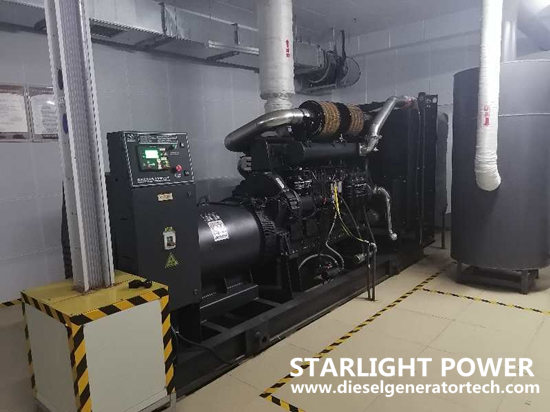Maybe many people are not clear what three gaps of piston ring of generator engine is, and its functions. So sometimes asking the test methods and measurement method. Today Starlight Power company summarizes the test and measurement of three gaps of piston ring (end gap, back gap, side gap) .
When assembling piston ring of generator set engine, we should ensure that there is a good fit clearance between the piston ring and the piston environment, and the inner wall of the cylinder, so as to prevent the piston ring from being stuck and broken. The following tests shall be carried out for this purpose.

The test methods and steps of measurement for three gaps of piston ring
1.Eng gaps of piston ring
The end gap of the piston ring is that the piston ring is placed in the inner wall of the cylinder, and there should be a gap at the opening position. The main purpose of leaving this gap is to place the piston ring stuck in the cylinder after being heated and expanded. The size of the piston ring end gap is related to the inner diameter of the cylinder. Under normal circumstances, when the inner diameter of the cylinder is 100 mm, the end gap should be between 0.25 and 0.4 mm. The inspection of end gaps is generally measured with a feeler gauge.
During the measurement, if finding the eng gaps’ value is over the specified data, we should rematch piston ring; if lower than the specified data, one end of the ring shall be filed with a file, and the other end shall be reserved as the inspection plane until the repair reaches the specified value.
2.Side gap of piston ring
The upper and lower clearance of the piston ring in the piston ring groove is called the side clearance. During installation, if the side clearance is too large, the sealing effect of the piston ring will be weakened; if it is too small, it may be stuck in the ring groove and cause cylinder pulling accident. During inspection, first place the piston ring in the piston ring groove, and then insert the thickener gauge into the upper side of the piston ring for measurement.
During the measurement, if the side clearance is too small, the piston ring can be ground flat on the place with sandpaper. If the specified data cannot be found during measurement, repair can be carried out according to the experience data.
The side clearance of the first gas ring shall be repaired as 0.09-0.13mm, the second gas ring as 0.06-0.09mm, and the oil ring as 0.04-0.1mm.
3.Back gap of piston ring
When the piston is installed into the cylinder, the difference between the thickness of the piston ring and the depth of the ring groove is the back clearance of the ring. When the piston ring is put into the ring groove, the value of back clearance can also be obtained by measuring the value of the piston ring lower than the ring groove edge. Under normal conditions, the back clearance of gas ring is generally 0.15-0.35mm, and that of oil ring is 0.35-0.7mm.
During assembly engine, the experience of checking the piston ring side clearance and back clearance is: insert the piston ring into the piston ring groove, which is lower than the edge of the ring groove and can move freely without looseness.
Hope the article is helpful to you. If you also have a purchase plan of diesel genset, welcome to contact us. We can provide Cummins, Volvo, Perkins, Deutz, Yuchai, Shangchai, MTU, Ricardo, Weichai, Wuxi etc.
Comments
Post a Comment